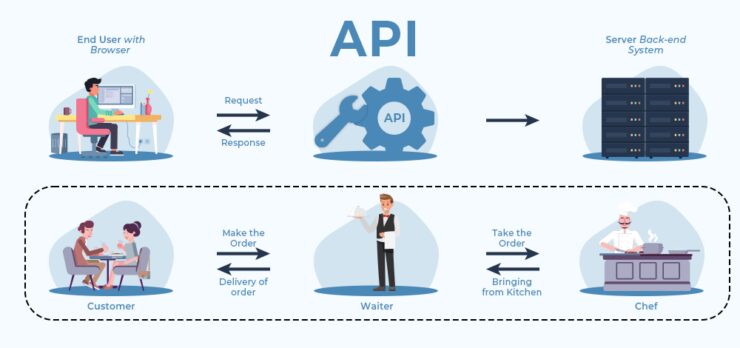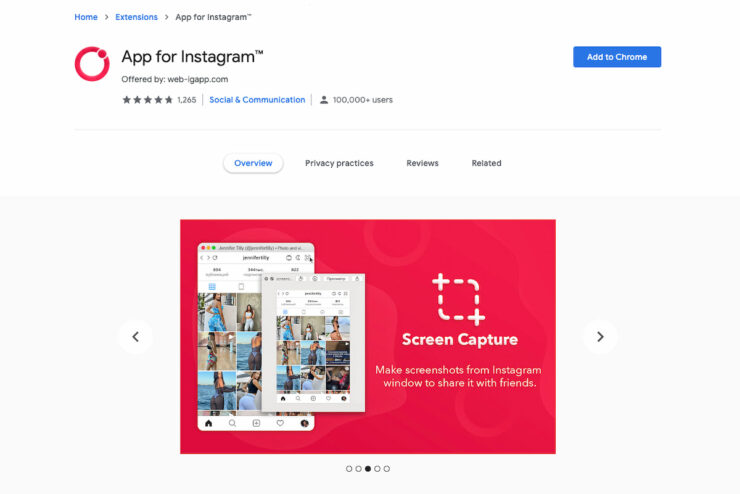In today’s competitive social media landscape, brands need to continually find ways to engage with their audience and track performance.
A powerful tool that can help businesses achieve this goal is the Data365.co Instagram API. This article will explore how the Instagram API boosts engagement, how it can be leveraged for better analytics, the features and functionalities it offers, and best practices for using it effectively.
How Instagram API Boosts Engagement

Reach a Wider Audience
The Instagram API allows brands to connect their Instagram accounts with third-party applications and services, such as websites, mobile apps, and social media management tools. By integrating the API, businesses can extend their reach beyond the Instagram platform and engage with a wider audience. This integration enables brands to display their Instagram content on their websites, creating a seamless experience for users and encouraging them to interact with the content.
Enhance User-Generated Content
User-generated content (UGC) is a powerful way to engage with your audience and build trust. By using the Instagram API, businesses can easily collect and display UGC on their website or app, which not only encourages users to share their own content but also showcases the brand’s presence in real life. This social proof can help increase engagement rates, drive traffic, and improve conversion rates.
Streamline Content Management
Managing content on multiple platforms can be time-consuming and inefficient for businesses. The Instagram API helps streamline content management by allowing brands to schedule, publish, and manage their Instagram content from a single dashboard. This centralized approach saves time and makes it easier for businesses to plan and execute their content strategy, ultimately leading to higher engagement rates.
Leveraging Instagram API for Better Analytics

In-Depth Performance Metrics
One of the key benefits of the Instagram API is the ability to access in-depth analytics about your account’s performance. With the API, businesses can track various engagement metrics such as likes, comments, saves, and impressions. Additionally, brands can analyze follower demographics, growth rates, and content performance trends. This data can help businesses better understand their audience, refine their content strategy, and optimize their marketing efforts for maximum engagement.
Monitor Competitor Performance
Keeping an eye on the competition is essential for any business, and the Instagram API makes it easy to track competitor performance. By using the API, businesses can monitor competitor accounts, analyze their content, and compare engagement metrics. This information can provide valuable insights into what works and what doesn’t, helping brands stay ahead of the competition and continually improve their own engagement strategies.
Advanced Reporting and Visualization
The Instagram API allows for advanced reporting and visualization of data, enabling businesses to create custom reports and dashboards that provide a clear and comprehensive view of their Instagram performance. By integrating the API with business intelligence tools, brands can easily analyze data, identify trends, and make data-driven decisions to improve their engagement and overall online presence.
Instagram API Features and Functionalities

Content Publishing and Management
The Instagram API enables businesses to publish and manage their content directly from third-party platforms, such as social media management tools or custom-built applications. This feature simplifies the content management process, allowing brands to schedule, publish, and edit their Instagram posts without manually logging into the platform.
Comment Moderation
Maintaining a safe and engaging environment for your audience is crucial for brand reputation and user experience. The Instagram API offers comment moderation functionality, allowing businesses to automatically hide or delete inappropriate comments based on custom-defined criteria. This feature helps maintain a positive and welcoming atmosphere for your community, ultimately boosting engagement.
User Authentication
The Instagram API provides user authentication features, enabling businesses to securely connect their users’ Instagram accounts with their own applications or services. This functionality allows for a seamless user experience and offers additional benefits, such as enabling users to share their Instagram content directly through the integrated application.
Best Practices for Using Instagram API Effectively

Stay Up-to-Date with Changes
Instagram frequently updates its API to provide new features, improvements, and bug fixes. Staying up-to-date with these changes is essential to ensure your integration continues to function smoothly and effectively. Regularly review the Instagram API documentation and subscribe to relevant developer newsletters or forums to stay informed about any updates or changes.
Optimize API Usage
To ensure optimal performance and avoid hitting rate limits, it’s essential to optimize your API usage. This can be achieved by implementing caching, using webhooks, and limiting the number of API calls made. By optimizing your API usage, you can reduce the risk of errors and ensure your integration runs smoothly.
Prioritize Security and Privacy
When integrating the Instagram API, it’s crucial to prioritize security and privacy. Ensure you follow best practices for secure development, such as using HTTPS, protecting API keys, and regularly updating your application to address any vulnerabilities. Additionally, respect user privacy by only requesting the necessary permissions and providing clear and transparent information about how their data will be used.
Future of Instagram API Integration
The future of Instagram API integration seems promising as brands continue to seek innovative ways to increase their engagement with audiences on social media. With the Instagram API, brands have access to a wealth of user-generated data, which can help them better understand their customers and develop targeted marketing campaigns. As Instagram continues to grow in popularity, there is likely to be an increase in demand for API integration that can provide real-time analytics and insights.
However, it is also important for brands to be aware of potential limitations and challenges associated with Instagram API integration, such as changes to API policies and user privacy concerns. Overall, the future of Instagram API integration holds great potential for brands looking to improve their social media presence and drive engagement with their target audience.
In conclusion, the Instagram API provides businesses with a powerful tool for boosting engagement and gaining valuable insights into their audience and performance. By effectively integrating the API into their marketing strategy, businesses can expand their reach, enhance user-generated content, streamline content management, and access in-depth analytics. By following best practices and staying up-to-date with API changes, brands can fully leverage the potential of the Instagram API and significantly improve their online presence.
Related Posts:
- 20 Best Gaming Headset Under 50$ 2024 - for PC, PS4,…
- 12 Best Car Wax For Black Cars 2024 - Protection and…
- Top 10 Best Power Inverter for Car 2024 - Keep Your…
- Top 10 Best Paint Sprayer For Cabinets 2024 -…
- 15 Best Dog Food For Allergies 2024 - Adult, Puppy…
- Top 16 Best Office Chair Covers 2024 - Chair…







